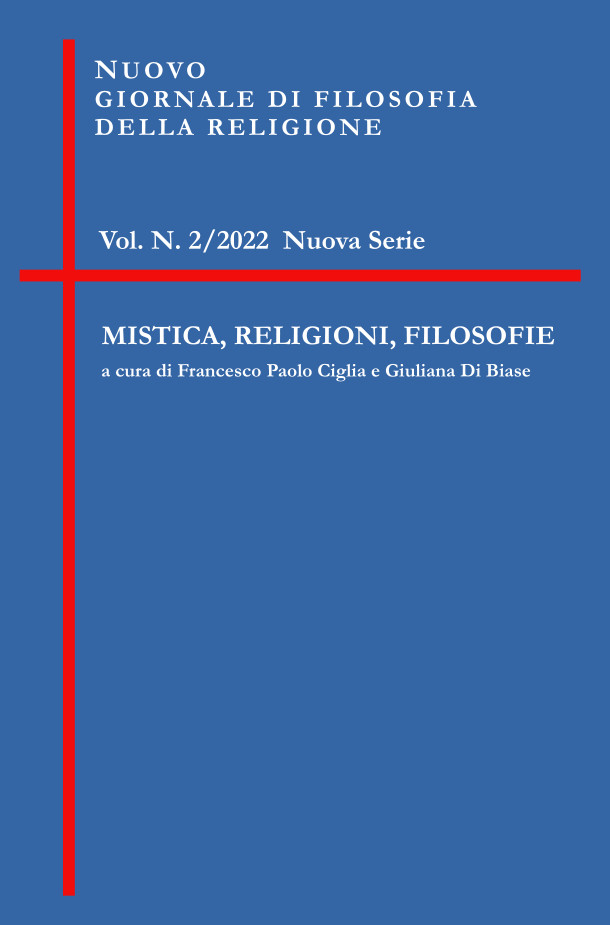Abstract
Nel saggio sono esaminati alcuni significati del termine “mistica” nella contemporaneità. In primo luogo, si distingue l’uso negativo in riferimento a qualcosa di fantasticato e non valido, in secondo luogo, si prendono in considerazione i casi in cui ci si referisce positivamente ad esperienze che si collocano nella dimensione religiosa, della quale si tracciano le caratteristiche essenziali. Su questo terreno la mistica è considerata come un’esperienza straordinaria di contatto con il divino, ad esempio, la mistica sponsale, oppure come un continuo legame di unione con il divino, mistica del quotidiano. Un terzo caso è quello delle vie filosofiche alla mistica, intesa come culmine e superamento della ricerca razionale. Le molte vie, nonostante la diversità dei percorsi, tendono ad un’unica meta: l’incontro con il divino.
In the essay I examine some meanings of the term “mysticism” in our time. Firstly, it is necessary to distinguish the use of the term in a negative sense to indicate something just fruit of our phantasy, then not valid according to the experience; secondly, it is possible to consider some cases in which mistics is linked up to with the religious experience. Starting from it mistics can be considered as an extraordinary experience of the divine, such as the nuptial mysticism for example, or as a continuous connection with the divine, that is the mistics of the everyday life. A third case is the one of the philosophical itineraries to the mystical experience, as culmination and the overcoming of the rational research. The many ways, notwithstanding the different courses, tend toward a unique goal: the encounter with the divine.
Copyright and licensing: The journal supports the principles contained in the Berlin Declaration on Open Access to scientific literature (2003), reiterated in the Italian CRUI Guidelines on Open Access journals. Copyright Notice: papers made open to the public are published under the CC BY--4.0 license.
Archiving : This journal uses the LOCKSS system to create an archiving system, which is distributed between participating libraries and enables them to search through the permanent archives of the journal for the purposes of conservation and restoration. All journal data and publications are also saved and stored directly on the platform

